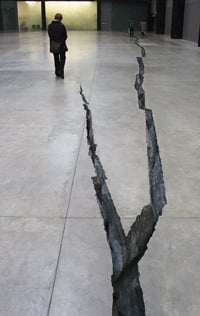Mind the gap
Has the time come for a new arts investment fund? Graham Henderson makes the case

A recent survey of arts organisations commissioned by Arts Ventures, and delivered by ArtsProfessional magazine, has shown a significant appetite for non-grant funding, and in particular for investment in income-generating activities designed to increase the range and resilience of funding solutions (see p2).
• 93% of arts organisations would like to generate more income from commercial activities
• 94% are open to new relationships with investors
• 70% indicate they do not currently use loan finance
• 84% of respondents say they would benefit from a dedicated arts investment-readiness consultancy.
Many arts organisations have the potential to develop activities complementary to their main artistic missions, capable of generating a profit. However, they are often unable to attract the commercial investment needed to develop such opportunities. For its part, private equity does not consider opportunities for investment in the arts sector for a number of reasons including lack of investment readiness or collateral security, and the relatively modest scale of investment required and rate of return promised. Arts Ventures is an initiative designed to create an arts investment fund that will build to £25m and plug the gap for this kind of commercial investment in the arts.
Some arts organisations are already successfully making money from (for instance) property development, merchandising, providing corporate training services or running a café. However these organisations tend to be the ‘big beasts’ of the arts world, with budgets running into the millions and the ability to leverage investments into these ancillary activities. In contrast, there are many smaller arts organisations whose plans to create such additional income streams never make it off the drawing board. In the absence of investment, skills and infrastructure, the boards of these organisations quite sensibly regard such activities as too risky, and as a distraction from the organisation’s key artistic aims.
Arts organisations require a source of simple, relatively small-scale, investment designed to meet this demand. The Survey demonstrates that most arts organisations require relatively modest investments in the £100–300K range. However, a new arts investment fund needs some special features. It is unlikely to be able to offer the rates of return or upside gains traditionally looked for by mainstream venture capitalists: an arts investment fund based on a limited profit, or capped, return would provide a means for private equity to invest in the arts on a semi-philanthropic basis. Investors would receive a return on their investment, but one limited to (say) 2%. Any upside gain beyond this would be used to grow the size of the fund. Private equity has also been affected greatly by changes in the economy, and investors are looking both to diversify their investments and to contribute to social outcomes. Investors are already used to spreading their investments over a wide variety of different activities, with varying rates of return. An arts investment fund would provide them with a means of investing a small percentage of their money into the arts, with the confidence that they will see a modest return on their investment. In the process it could provide a sustainable source of investment funding for the arts of a sort that has never previously existed.
The need for a new arts investment fund is clear. Arts Council England’s efforts are concentrated almost entirely on the need to grow income from private philanthropy, effectively mandating the creation of another source of finance for the generation of earned income by arts organisations. It may fall to a fund to bridge the gap, combining loan finance on reasonable terms with a mission to increase the investment readiness and skills and infrastructure of arts organisations. Clearly such a fund would need to provide some detailed consultancy advice on how arts organisations need to manage non-grant finance. This might involve internal governance, communications with investors and cash-flow planning, as well as product development and the recruitment of skilled staff from the commercial sector. More importantly, it may involve significant changes in the culture of the arts organisation, with a healthy balance being created between artistic outputs and income streams, and the breaking down of barriers and prejudices that prevent this from happening.
An arts investment fund is not intended as a substitute for grant funding, nor as a distraction from the core artistic goals of arts organisations. It will not provide a panacea for all the funding challenges facing the arts sector. What it may be able to do, is to attract a steady flow of new non-grant finance into the arts, designed to develop precisely those areas of the arts which are capable of making money, to the great advantage of those areas which are not.
Such investment may help arts organisations to achieve some long-cherished goals, including the creation of a sustainable mixed funding model, the establishment of a strategic reserve, an innovative approach to the creation of new audiences and the use of their brand to boost levels of unrestricted funding. Any such investment has the potential to have an enormous impact on the arts sector. Even a 5% shift in the basis of arts funding would constitute a seismic shift in attitude and approach. Carefully targeted investments could transform the prospects for arts organisations, helping them to professionalise what they do, produce a healthy balance between income and non-income generating activities and establish a firm foundation for the delivery of great art.
Join the Discussion
You must be logged in to post a comment.